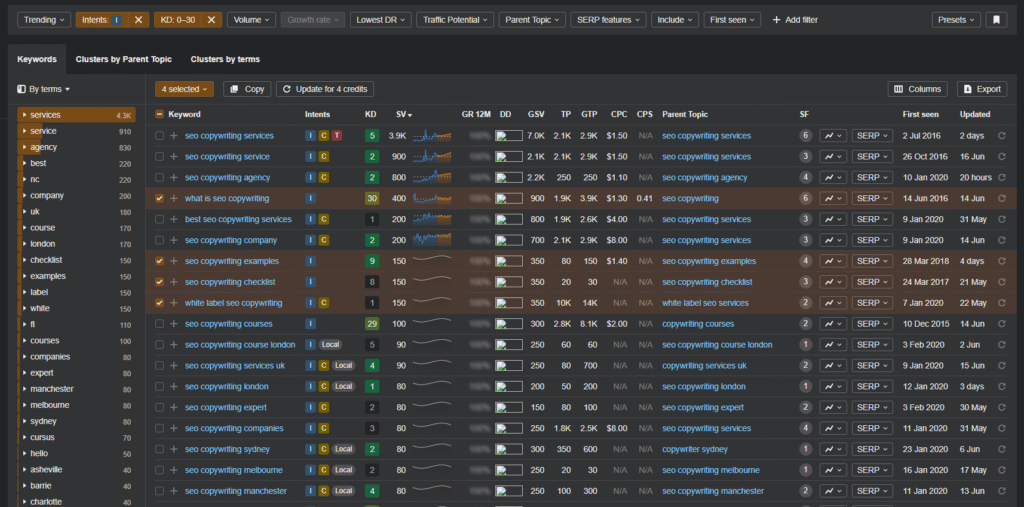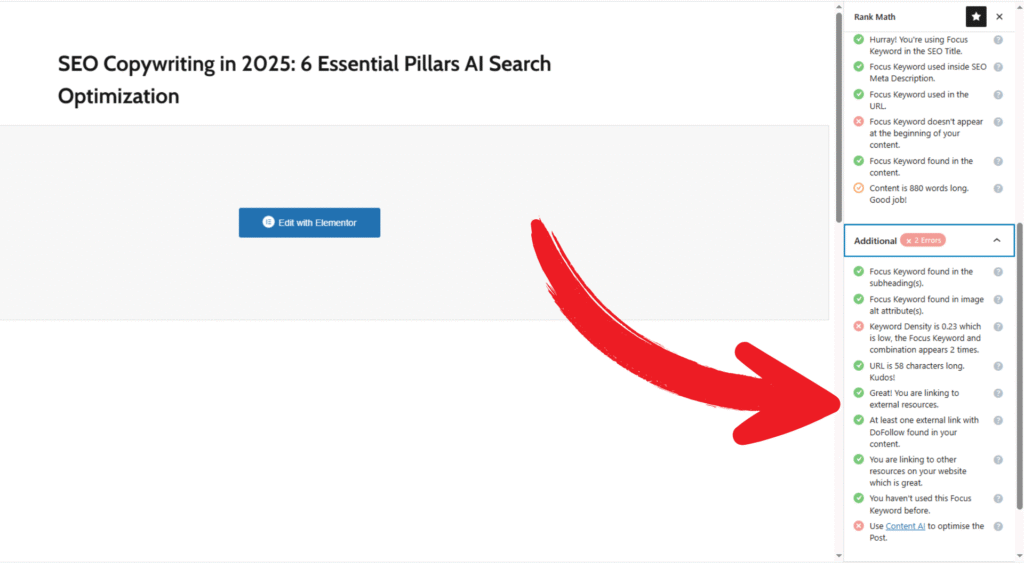Search Engine Optimization (SEO) is no longer about stuffing keywords or tricking algorithms. In 2025, SEO copywriting is about writing high-quality, user-friendly content that aligns with Google’s latest updates like E-E-A-T (Experience, Expertise, Authoritativeness, and Trustworthiness), AI Overviews, Featured Snippets, and the Helpful Content System.
Businesses that want to stay ahead need content that meets both user expectations and search engine criteria.
This guide explains six actionable pillars of SEO copywriting for 2025. You’ll learn how to write content that ranks, increases time-on-page, earns backlinks, and positions you as a trustworthy voice in your niche.
Match Every Word with User Intent in SEO Copywriting

Google’s algorithm now prioritizes content that clearly satisfies search intent. Every piece of content should be written with a specific purpose: to inform, sell, compare, or guide. Misaligned content gets pushed down in rankings or ignored entirely.
Types of User Intent in 2025:
Informational: “How does SEO copywriting work?”
Navigational: “Best SEO agency in Dubai”
Transactional: “Buy SEO copywriting service”
Comparative/Commercial: “SEO tools vs content tools”
How to Apply:
Start with keyword tools like Ahrefs, Semrush, Google Search Console, or ChatGPT prompts.
Use People Also Ask and Related Searches to identify real user queries.
Align your headline, intro, and call-to-action with the reader’s purpose.
Example: If the keyword is “best free SEO tools,” your blog should list and compare tools—not explain what SEO is.
Elevate Content Trust Using Google’s E-E-A-T Framework
Experience, Expertise, Authoritativeness, and Trustworthiness—this is how Google filters quality. In 2025, E-E-A-T isn’t just a guideline; it’s a ranking requirement.
How to Build E-E-A-T in Your Content:
Experience: Share real-world usage, outcomes, and personal advice.
Expertise: Highlight author bios with credentials or years of experience.
Authoritativeness: Get mentions and backlinks from other reputable sources.
Trustworthiness: Ensure your site has HTTPS, no spam, and transparent disclaimers.
E-E-A-T Checklist:
Add a verified author box under every post
Link to studies, data sources, and industry pages
Share screenshots of results or tools
Display client reviews or certifications
Write Clear, Structured Content That Boosts On-Page SEO
Readers scan. Google reads structure. Use a clear layout to guide both.
On-Page SEO Best Practices:
Use H1 for titles, H2 for main sections, and H3 for supporting points
Include the primary keyword in your H1, meta title, intro, and subheadings
Use your target keyword in the first 100 words
Write short paragraphs (2–3 lines max)
Use bullet lists and numbered steps
Optimize images with keyword-rich alt text and compressed file sizes
Tools to Improve Structure and Readability:
Hemingway Editor
Grammarly
Surfer SEO
Example Structure:
H1: What Is SEO Copywriting in 2025?
H2: Why It Matters More Than Ever
H2: 6 Core Elements of High-Ranking SEO Copy
H3: 1. Intent Alignment
H3: 2. E-E-A-T Signals
H3: 3. Formatting & Readability
Optimize Content for Google’s AI Overviews & Featured Snippets
Google’s Search Generative Experience (SGE) means that AI selects and highlights the most structured, concise, and helpful content. If your content is not optimized for AI Overviews or snippets, you’re invisible.
Snippet & SGE Writing Tips:
Answer the core question clearly in the first paragraph
Use FAQ-style subheadings
Write step-by-step instructions with bolded steps
Use schema markup (FAQ, HowTo, Article)
Example Format That Wins Snippets:
How to Write SEO Copy in 2025:
1. Understand user intent.
2. Add E-E-A-T credibility.
3. Structure for AI reading.
4. Include visual aids.
5. Add schema markup.
Use Visuals and Multimedia to Increase Engagement & Ranking
Visuals reduce bounce rates, increase time on page, and are now included in AI-generated previews. In 2025, multimedia isn’t optional—it’s essential.
Types of Visuals That Improve SEO:
Infographics explaining complex ideas
Video walkthroughs or short reels
Web Stories (especially for mobile users)
Side-by-side product or service comparisons
Visual SEO Best Practices:
Use relevant file names (e.g., seo-copy-2025-guide.png)
Always fill out image alt text
Compress images for fast loading
Add captions for context
Tools for Visual Creation:
Canva for infographics
Lumen5 for text-to-video
Animaker for animations
Visme for presentations
Create Internal Links to Build Topical Authority & Relevance

Google now rewards websites that go deep—not broad. Topical authority means your site covers a subject fully through interconnected content.
How to Build It:
Choose a core topic (e.g., SEO Copywriting)
Write subtopics (e.g., Keyword Strategy, Readability, AI Optimization)
Link all relevant articles together using anchor text
Use breadcrumbs and silo structure
Benefits:
Better crawlability
Improved time on site
Higher chance of featured snippet inclusion
Tip: Use plugins like Link Whisper to automate internal linking.
Pro Tips to Keep Your SEO Copywriting Future-Proof in 2025
Use AI tools like ChatGPT or Jasper for outlines, but rewrite everything with your human voice
Refresh old articles monthly: update facts, improve readability, and fix links
Include emotional storytelling when teaching or selling
Use heatmaps and click tracking to test what works (e.g., Hotjar)
Add clear CTAs at the end of each post
Conclusion: Write for Users, Optimize for Machines, Rank Like a Leader
SEO copywriting in 2025 is about clarity, trust, and usability. By mastering the six pillars—user intent, E-E-A-T, on-page structure, snippet optimization, multimedia, and internal linking—you’ll write content that earns visibility and trust.
No tricks. Just value-driven, SEO-aligned, AI-ready content that delivers.
Next Step: Download our free “SEO Copywriting 2025 Checklist” or explore our latest SEO tools and services to help you stay ahead.